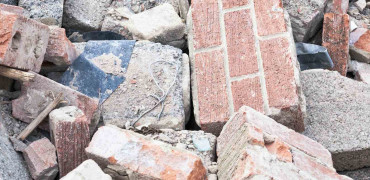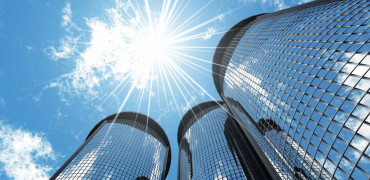It is 2022, technology and medical advances enable people to live longer healthier lives – even amidst a global pandemic, our expertise and resilience allows us to see a long and flourishing global future.
These huge advances however can provide as many problems as they solve.
Overpopulation and overcrowding could be considered one of the causes of our pandemic and we could even be chasing our tail, so to speak!
As our populations increase so does the need for living space. The increase in our urban landscapes also results in the destruction and decline of forests, woodland and other vital habitats.
Our cramped living proximity to animals and each other allows for perfect conditions for infection. Thus limiting our natural resources and threatening both our health and ecosystem. We overlook these issues at our peril.
Even a few vertical cities could ease the strain
Things are looking up
I think we can all agree that the human population continues to rise at an alarming rate, our environment and resources are creaking under the strain and may not be able to sustain us in the future.
We are all exploring, experimenting and beginning to practice a more sustainable life but will it be enough?
Could the vertical city concept be a way forward? Could looking up be an alternative to looking out, and become a solution to our overcrowding?
A vertical city is a huge human habitat that can be contained in a massive skyscraper. As we squeeze every inch out of the ground, perhaps we could be using the airways more productively.
Rather than destroying forests, land and vital swamp areas to build houses, factories and shops.
Each of these industries could be housed in a vertical tower. High rise construction provides more available living, recreational and working space.
In fact, why couldn’t we live, work and go to school in high rise buildings?
Better use of land
With the land available and the population rising it will become increasingly difficult for farmers to grow enough food to sustain our consumption. However, it could also be possible for our agriculture to be housed in vertical towers both on the inside and out.
Vertical cities could also provide open areas, recreational spaces and even swimming pools. Sunlight and fresh air is of course vital for our wellbeing and development and this would have to be carefully integrated in order for us to succeed and survive.
Seoul in South Korea possibly has the most high-rise buildings, 16,359 followed by Moscow in Russia. However, the world's tallest building is Dubai’s Burj Khalifa standing at 828m!
Many architects and designers are already envisioning a future where we live in inter-connected mega-towers that contain all the components that a human could need, rather like a giant hamster cage or rabbit warren.
“High capacity, high efficiency ultra-tall buildings occupying a relatively small, car-free, pedestrian-friendly parcel of land,” Kenneth King and Kellogg Wong have written in the vertical city.
“Within this footprint are all the self-sustaining features of infrastructure, buildings, facilities, and services necessary for improving the living, working, cultural, entertainment, sports, recreation, and leisure qualities of life for residents.”
Wind and motion
If city’s like this are to become our future there are of course many challenges ahead. With extremely tall buildings managing the effects of severe winds will be vital.
Most skyscrapers are designed to move a few feet without sustaining any structural damage, however research shows that even a small amount of movement can trigger motion sickness, insomnia and anxiety.
Designers are continually researching ways in which to mitigate this problem, typically horizontal movements can be reduced by tightening the building's steel structure to make it more rigid.
To reduce sway at the Ping An building, China, a vibration control device has been installed close to the roof featuring two 300-ton weights. When the building begins to sway in high winds, sensors at the top of the skyscraper detect the motion.
Based on instant computer calculations, the weights are then activated to counteract the movement. Through the action of the device, sway can be reduced by approximately 40%. This dramatic reduction in sway will be an important factor in the construction of high-rise buildings and a crucial element as to whether we can successfully live there.
Conclusion
We are faced with both the problem of overpopulation and environmental disasters of the future. Our smartest designers and architects are busy searching for a solution.
How much time we have at our disposal is unclear, however it is possible that even a few vertical cities could ease the strain.
Moving forward will take both foresight and technology, a leap of faith, extreme imagination and a will to change.
Kirsty Hammond is editor of Specifier Review




